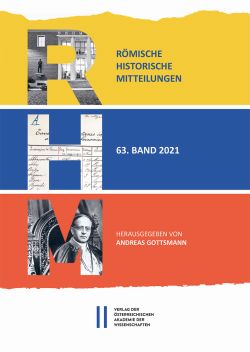
Römische Historische Mitteilungen 63/2021, pp. 155-182, 2021/11/02
The journey to Rome which Frederick III undertook for his coronation as emperor was portrayed in a number of works of art, which were conceived along the route through Italy. However, these works of art were meant to serve as propaganda for the emperor only indirectly. As a matter of fact, those commissioning the works considered the symbolic power of the events and the authority of the Imperator Romanorum far more important in terms of ‘self-portrayal’. These works of art were indeed commissioned to celebrate the numerous promotions to the aristocracy or to a higher position within the aristocracy that Frederick III performed during his journey. Through the images depicted on medals and on illuminated manuscripts, the ennobled ones, who commissioned these works, aimed at associating their personal image and their memoria with the emperor. Particularly noteworthy are the panels of two cassoni, where Frederick’s two-day journey, his stay in Florence and the crowning ceremonies in Rome are depicted in multiple scenes. The cassoni were commissioned by the Medici family for Orlando de Medici, upon whom a knighthood was conferred by the emperor and who most likely participated in the crowning ceremony in Rome. However, a differentiated approach must be adopted in order to analyse the realistic representation of the pictures: on the one hand, these pictures have an important documentary value, whereby the topographical factors are also taken into account. On the other hand, they deviate significantly from the historical facts. One of the most striking differences lies in the central motif of the crown used by the pope during the ceremony, which does not reflect the standard type of the emperor’s crown but is portrayed as a variation of the papal tiara. The real intention behind this kind of choice remains unknown, but it does illustrate the cultural clashes related to the public’s perception of this ceremony which was to be the last coronation of an emperor performed in Rome by a pope.